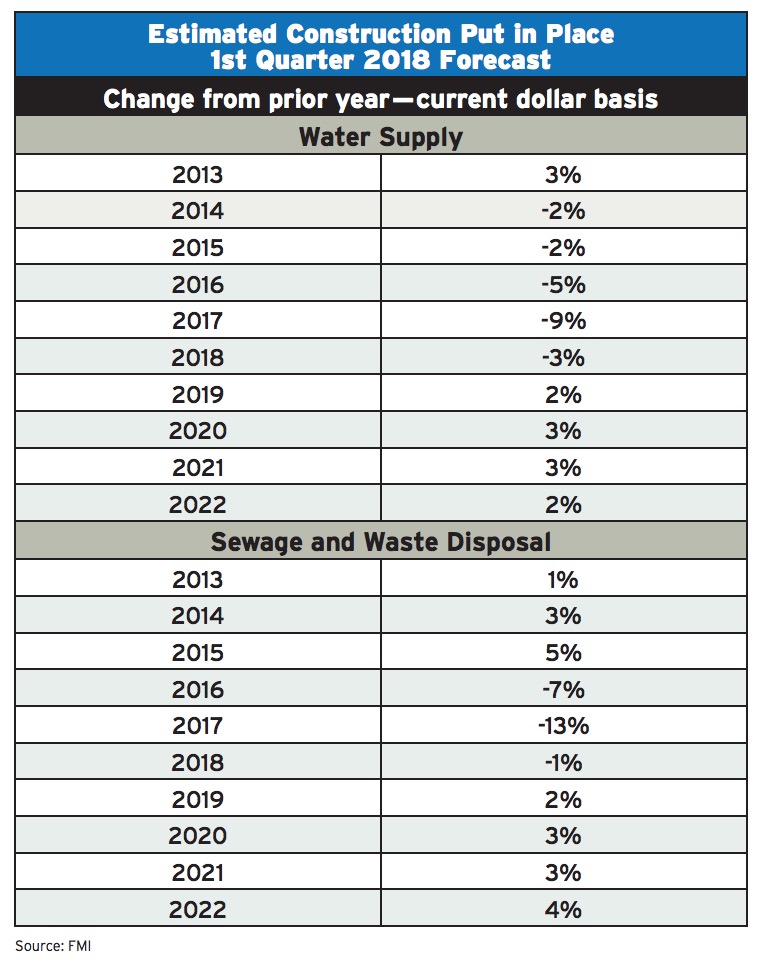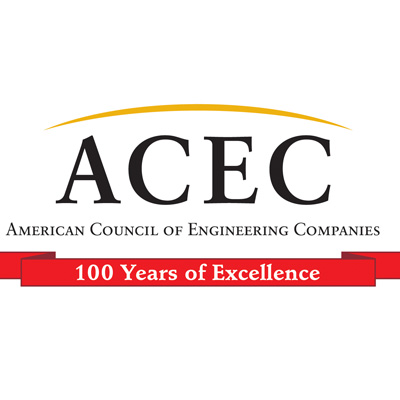AMERICAN COUNCIL OF ENGINEERING COMPANIES (ACEC)
By Gerry Donohue
 The water utility market is remarkably bifurcated. Of the more than 51,000 community water systems in the United States, 17 percent serve 92 percent of the population, according to industry data. These systems are in urban and suburban areas, boast diverse and growing rate-paying bases and have the size and expertise to access.
The water utility market is remarkably bifurcated. Of the more than 51,000 community water systems in the United States, 17 percent serve 92 percent of the population, according to industry data. These systems are in urban and suburban areas, boast diverse and growing rate-paying bases and have the size and expertise to access.
The remaining 43,000 systems sit at the opposite end of the spectrum. They tend to serve small communities—fewer than 10,000 customers—face a shrinking rate structure, struggle to comply with myriad federal regulations and have difficulty pursuing outside funding opportunities.
“When I meet with the utility general managers, I ask what keeps them up at night,” says Craig Close, national director of HDR’s Utility Management Services Business Unit. “The bottom line is they have so many needs. They don’t know what to prioritize.”
The challenges the utilities face are an opportunity for engineering firms. In addition to providing traditional design services, Close believes engineering firms can act as a public works department of sorts, providing a broad spectrum of services to the small community water systems.
“We wear many different hats,” says John McCarthy, president of water for Arcadis North America. “We provide financial consulting services, long-range planning, bond finance strategies, rate hike planning, regulatory compliance and asset management.”
Rock and a Hard Place
According to a recent Rand Corp. report, local utilities fund the design and construction of more than 95 percent of the nation’s water infrastructure, primarily through municipal bonds. State governments pick up most of the rest. To cover the maintenance and operations costs, as well as to service the debt, the systems rely on customers.
For many small community utilities, however, the numbers don’t add up.
First, rates in the vast majority of systems don’t cover the maintenance and operations and debt costs, and there appears to be no path to reach that equilibrium. “Unfortunately, the value of water still does not resonate with most citizens and stakeholders,” says McCarthy. “They see water as a product, rather than an asset that underpins the social, environmental and economic pillars of society.”
Second, America’s smaller cities, towns and rural areas have been losing population for decades, so they have fewer customers to cover the cost of their existing infrastructure, let alone make new investments.
Third, while urban systems tend to be densely packed, small town and rural systems have far fewer customers per mile of pipe, making maintenance and repairs more expensive.
Finally, the 2008 economic crisis hit municipal water systems hard. Between 2009 and 2014, capital spending fell by 22 percent, statistics show. It has since rebounded—in fact, municipal bond offerings are at an all-time high—but they dug themselves a deep hole.
Bridging the Funding Gap
ABOVE: New ACEC Chairman Manish Kothari (second from right), president/CEO, Sheladia Associates, Inc., participated in a panel discussion on opportunities and best practices for securing global projects at the recent Discover Global Markets (DGM): Design + Construct Forum in Kansas City, Missouri. DGM is the U.S. Department of Commerce’s flagship event series to build international opportunities for U.S. firms. Also pictured (from left) moderator Diane Willkens, Development Finance International, Inc.; Preston Winter, Millennium Challenge Corp.; and John Mogge, Jacobs.
Municipal water systems face a lot of rate-rise resistance—going back to the failure to articulate the value of water—but Close says they have no option. “Rates will have to go up to afford what they need. They need help determining what their funding gap is and how to bridge this gap,” he says.
Utilities are turning to engineering firms to help them build the case for a rate increase.
“In the past, water systems were not equipped to provide customers with information that could demonstrate why rate increases were necessary, so they simply asked customers to trust them,” says McCarthy. “As the world becomes more digital, the information becomes more accessible. Through innovation, we empower utilities to leverage data to help illustrate the depth and breadth of the factors that drive rate increases.”
Engineering firms then help with public outreach. “I’ve attended a lot of public outreach sessions over the past 20 years,” says Close. “There’s much more interest and involvement than 20 years ago. People are asking much tougher questions.”
Water systems are also counting on firms to help them in issuing municipal bonds and private activity bonds, and applying for federal and state grant programs.
Both McCarthy and Close say the best option for these communities is to combine a variety of projects into a single infrastructure program.
“Rather than approach a flood protection project as a standalone investment, we may add a recreation area to tap into park funding and a multi-use trail to get transportation money,” says McCarthy.
Close offers the example of a water system with a very high leakage rate but no access to funds to fix it. “We find they’re spending $1 million per year in power costs just to pump the water that is leaking away,” he says. “Now we can bundle water grants, energy grants and even something for improving water quality. By putting all of those together, we can get the job done.”
Download full article (PDF): More Than Water Infrastructure Design
Download May/June issue of Engineering, Inc.
 About the American Council of Engineering Companies
About the American Council of Engineering Companies
www.acec.org
The American Council of Engineering Companies (ACEC) is the voice of America’s engineering industry. Council members – numbering more than 5,000 firms representing more than 500,000 employees throughout the country – are engaged in a wide range of engineering works that propel the nation’s economy, and enhance and safeguard America’s quality of life. These works allow Americans to drink clean water, enjoy a healthy life, take advantage of new technologies, and travel safely and efficiently. The Council’s mission is to contribute to America’s prosperity and welfare by advancing the business interests of member firms.
Tags: ACEC, American Council of Engineering Companies, Gerry Donohue







 RSS Feed
RSS Feed